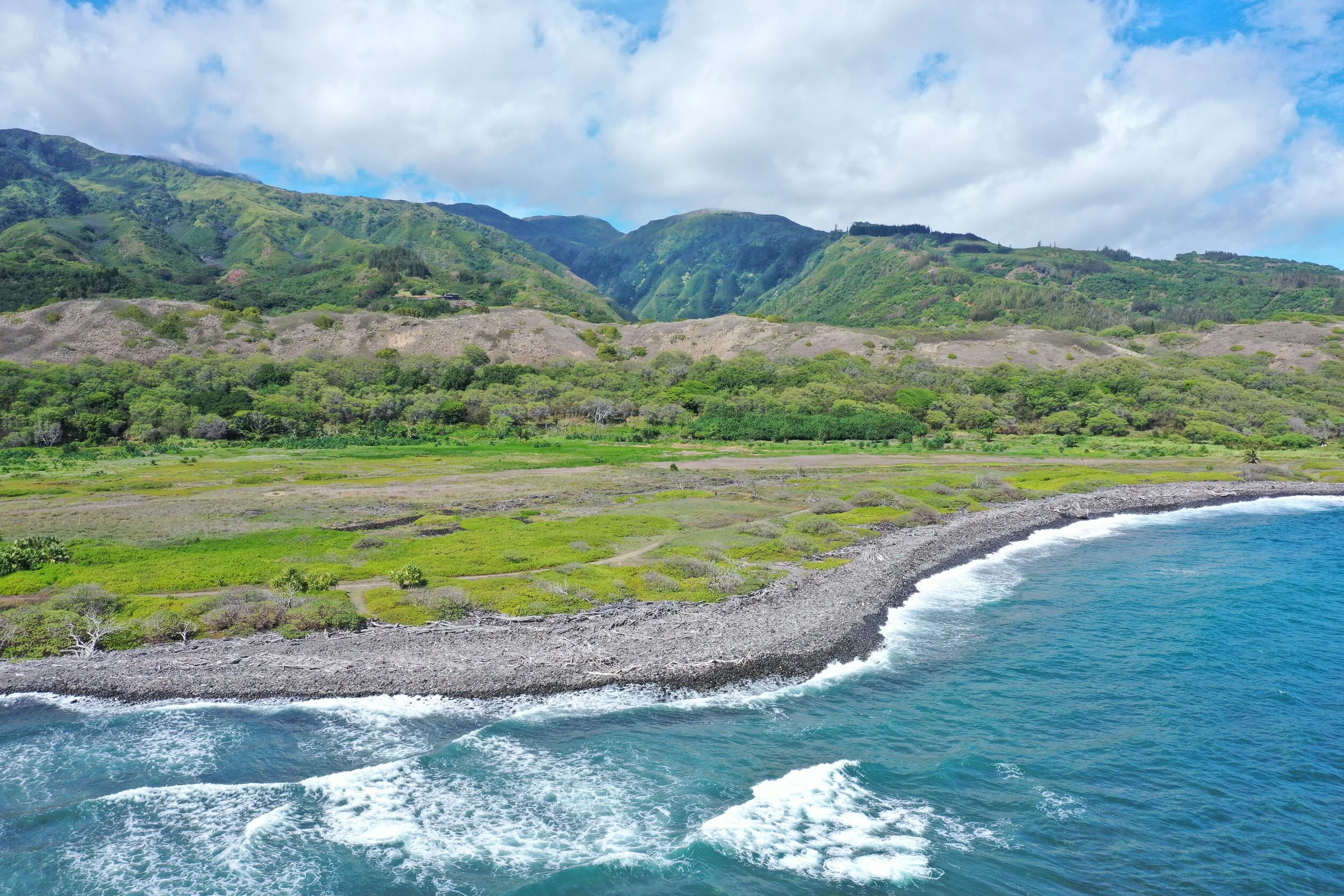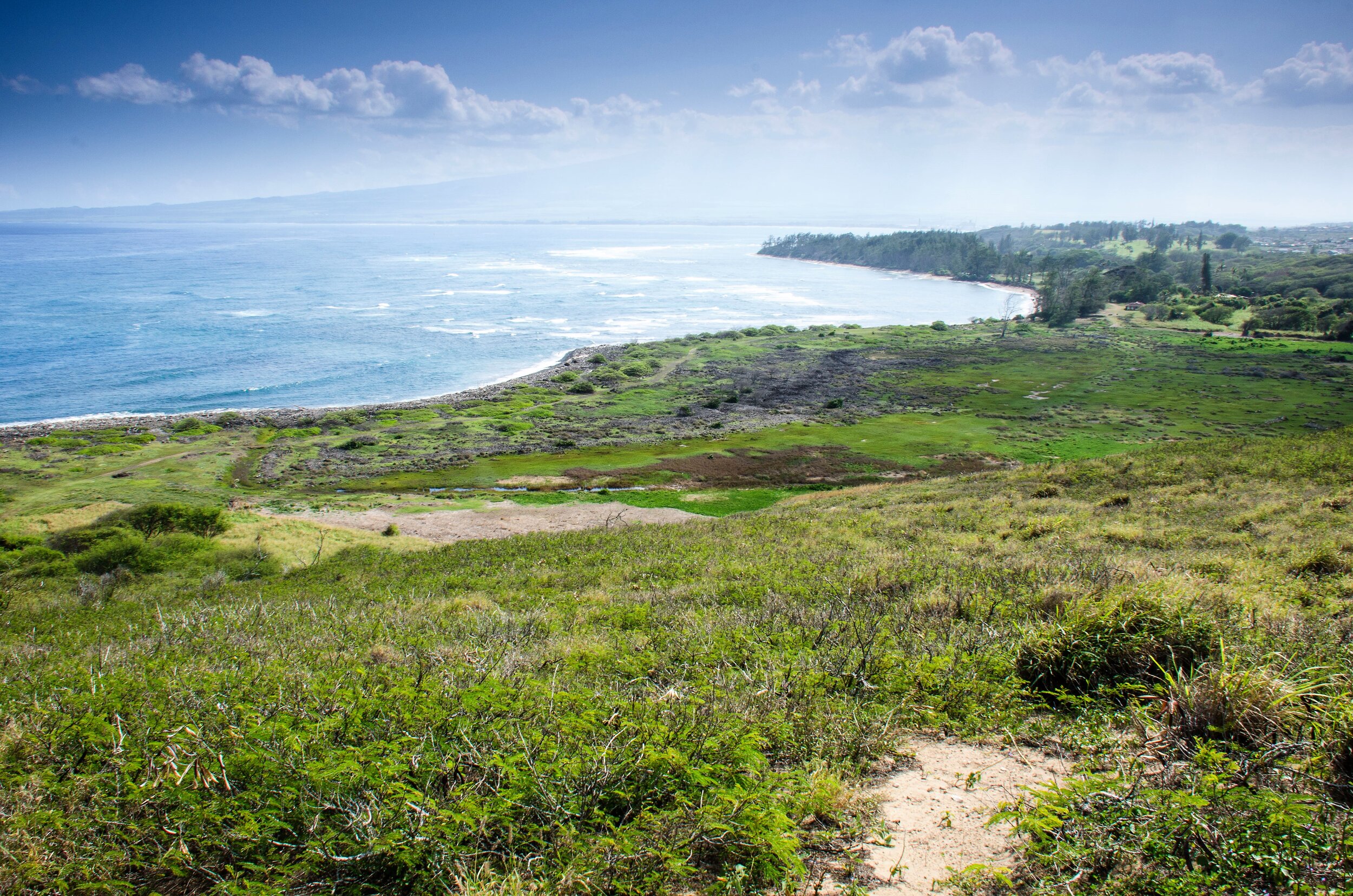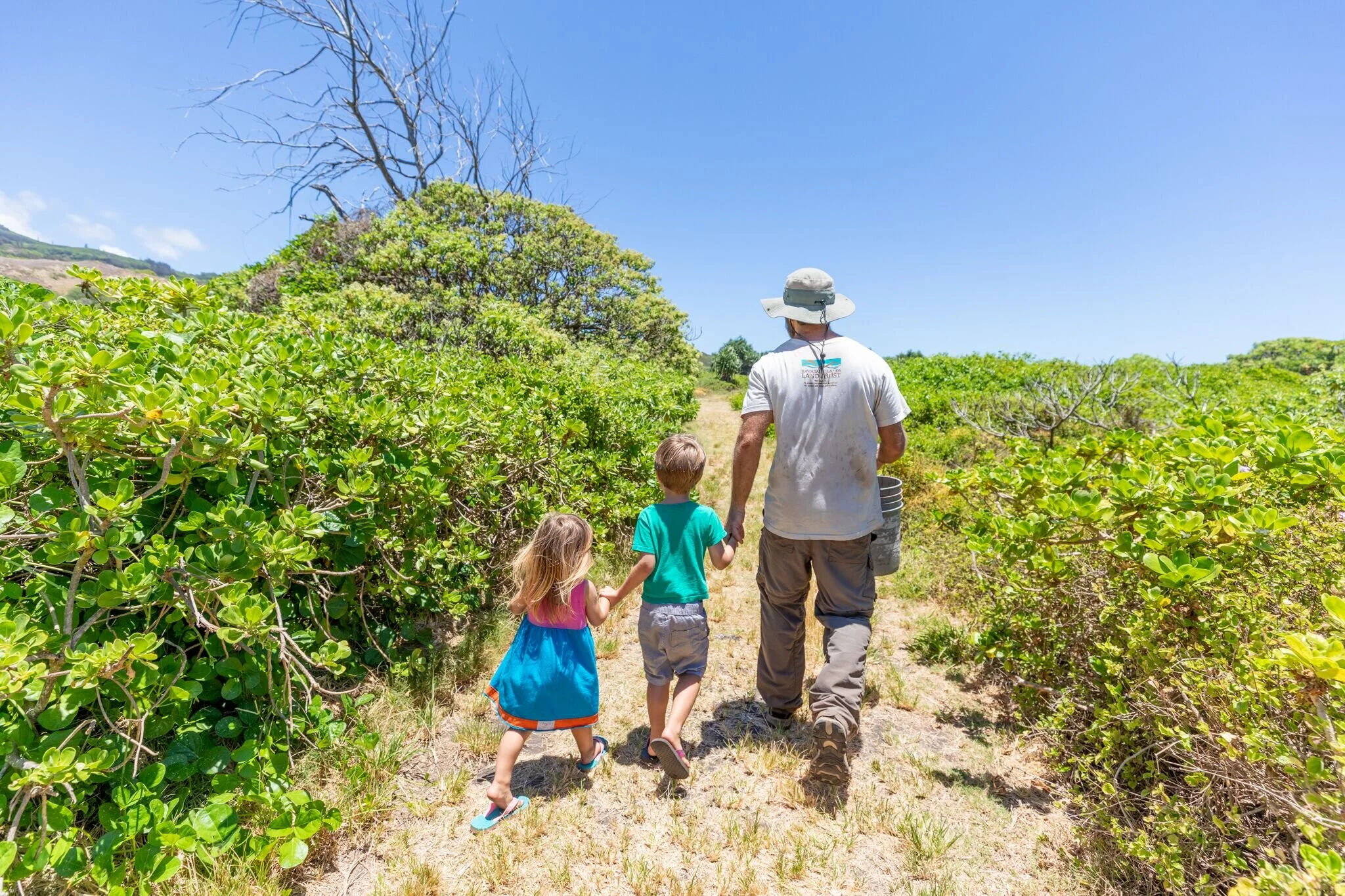Protected Lands - Maui
WAIHE‘E COASTAL DUNES & WETLANDS REFUGE
Active restoration is enhancing critical native wildlife habitat while preserving one of the most significant cultural sites in Hawai‘i, once populated with two thriving Hawaiian villages, Kapoho and Kapokea.
More information: Rules of Use and Access Document, School Visits, Volunteer Days, Talk Story on the Land
Ahupuaʻa: Waihe‘e Moku: Wailuku Size: 277 acres
Year Protected: 2004
Land Protection Strategy: Owned by HILT
Conservation Values: Recreation, archaeological and cultural preservation, and habitat for native plants and animals
Land Features: Coastal wetlands, dunes, marine shoreline, near-shore reef systems and riparian habitat
About Waihe‘e Coastal Dunes & Wetlands Refuge
The Land Trust took fee ownership of this very sensitive 277-acre site in 2004. Active restoration programs have enhanced critical native wildlife habitat, while preserving the area’s rich archaeological and cultural resources. Once populated with two thriving ancient Hawaiian villages, an extensive inland fishpond and several heiau, the Waihe‘e Refuge is among the most significant cultural sites in the state.
As a testament to the returning health of the ecosystem, five different endangered species have taken up residence at the Refuge in recent years. With the wetlands primarily cleared and habitat-appropriate plants now thriving, the area is host to many endangered native Hawaiian bird species, including Ae‘o, or Hawaiian stilt, and ‘Alae ke‘oke‘o, or Hawaiian coot. Native plants such as Naupaka (Scaevola taccada), ‘Ulei (Osteomeles anthyllidifolia), ‘Ākia (Wikstroemia uva-ursi), ‘A‘ali‘i (Dodonaea viscosa), Pōhinahina (Vitex rotundifolia), and Loulu (Pritchardia) are located on the Refuge. Additionally, Hawaiian medicinal plants ‘Uhaloa (Waltheria indica) and Noni (Morinda citrifolia) are also found here.
Quiet and pristine, the Waihe‘e shoreline is a favorite retreat for endangered Hawaiian monk seals and nesting green sea turtles. Off the coast, the extensive reef is one of the longest and widest on Maui. It’s believed that this reef system provided excellent fishing in ancient times and it is, in fact, still a favorite among local fishermen today.
The public is encouraged to get involved by participating in future volunteer days or free guided tours through our Talk Story on the Land environmental education series. For information on school visits at Waiheʻe, contact HILT Educator, Denby Freeland
The Hawai‘i Land Trust ensures that this rich cultural site, once slated for development as a destination golf resort, will be forever protected.
Luana Kawa‘a gifted HILT with and oli for Kapoho at Waihe‘e. This oli is often chanted at the beginning of a work day or at the beginning of a tour to greet the land and mahalo it for all it provides. You can read it here along with a translation. Click play on the video below to hear it. Next time you visit Waihe‘e, perhaps you can oli to her too.
HILTʻs Stewardship Efforts at Waiheʻe Featured on Outside Hawaiʻi
In November 2021, HILT’s work at Waiheʻe was featured on OC16ʻs Outside Hawaiʻi as one of a fortunate few organizations that are a part of Hawaiʻi Community Foundationʻs Community Restoration Partnership (CRP).
Hula Kiʻi
Hula kiʻi or puppets used in hula are made at HILT's Waiheʻe Refuge from hau grown and harvested on the land.
Maui Huliau Virtual Tour
Enjoy this virtual tour of Waiheʻe Coastal Dunes and Wetlands Refuge created by students of Maui Huliau
Hawaiʻi Land Trust is proud to partner with Fish Pono—Save our Reefs and support their goal to replenish herbivore populations so they can foster healthy coral reefs so that Hawaiʻi has thriving, self-sustaining coral reefs and fisheries.
Other Community HILT Preserves on Maui
Nuʻu Refuge
On Maui’s southern shore, in Kaupo. Learn more >
Veteran’s Peace Park
An urban park in Wailuku. Learn more >






